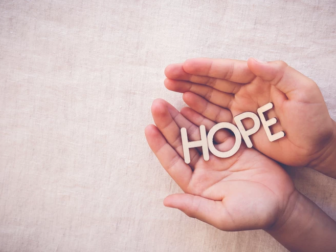Many of us, after surgery and treatments, are left with pain and discomfort. Most of us are told to just live with it, as though pain is a condition for being in remission. This is the irony about cancer: you never really feel the illness until you get the treatment to be rid of it. Shouldn’t it be the other way around? And is pain a necessity of recovery? I think not.
Truth is, even before my encounter with cancer, I had already been living with pain. Mostly it was in my hips and knees. It was annoying, always present, limiting my movement and activity. I thought, like many of us, that pain was a normal condition to be expected when you reached “a certain age”, or lived a certain lifestyle. It was, after all, “manageable”.
Then, cancer came, and then it came again, and with the treatments the pain worsened. Now there was the pain at the surgery site, and the pain in the shoulder, and the expander pain, and the joint pain. I fell a few times – pain. I almost broke my knee – more pain. The slightest effort – pain. My meager efforts to get “back in shape” only led to more pain. I learned to live with it. I thought that it was to be expected, the price to pay for surviving.
Funny how so many of us just resign to a reality of pain. Be it neuropathy, phantom limb pain, movement restrictions, internal organ dysfunction, or even emotional distress. It takes a huge toll on our quality of life, slowly eroding our appetite for living and continuing the damage the cancer started: it makes us want to shut down, our brains become foggy, we lose touch with ourselves, disconnect socially, limit our movement and activity, stay in our safe zones. Doctors themselves are often powerless in dealing with chronic pain. Yet billions of people live with pain, daily! Among cancer survivors, over 35% of us report chronic pain after recovery. It’s supposed to be recovery!
During my recovery, I started a training program in Anat Baniel Method NeuroMovement. Originally I took the training to help my son in his development, and to work with other children. The method is reputed highly effective for learning disabilities and disorders in children, and I wanted him to experience a new modality, one that wouldn’t make him feel inadequate and that would speak to his brain first. But much to my surprise, I was the one who was transformed. All my pain went away, and I recovered mobility, flexibility, and a vitality that I hadn’t felt for quite a few years. I remember spontaneously breaking into a run to catch a bus, something I hadn’t done …EVER! (and I don’t mean taking the bus, haha). I can even feel graceful, even with all the disfigurement the surgeries caused.
It was like being free and young again, and finally feeling at home in my body. Like I could befriend myself, in this new reality. I may never regain my full physical integrity, but I can finally take pleasure in moving, in living. I sometimes lay in bed and marvel at being pain free. And with the pain gone, the fog lifted: all aspects of my life improved: my memory, attention, my focus, and my ability to manage my emotions. That’s how much energy pain sucks out of you. No amount of painkillers can give you your brain back.
“Consciousness is only possible through change; change is only possible through movement.” ― Aldous Huxley, The Art of Seeing
So naturally, I tried to understand how this happened. For those of you who are curious, I did some research and here’s my explanation, in layman’s terms.
Pain is something that happens in our brains. It is our brain’s interpretation of a signal that something is wrong. That signal is sent by a type of neuron called “nociceptor”. This is important because the feeling of pain can be dissociated from its origin, as it happens in certain disorders like congenital analgesia. Just like you can feel pain even though there is nothing there (like in phantom limb pain or neuropathy). When we experience physical trauma, say a broken limb or surgery, our brain receives overwhelming signals of pain. In the case of neuropathy, damaged nerve fibers send incorrect messages to pain centers in the brain.
Sometimes, in order to stop receiving these, the brain withdraws or stops processing neuronal connections and incoming signals from the affected zones. But that disconnection – which is intended to save your brain from overload – also comes at a price. You lose a little bit of the brain map. Lose too many bits of brain maps, and you are no longer able to move certain parts of your affected area, or you have perpetual contraction. The symptom (pain) becomes the illness: in cases of chronic pain, studies have shown that “the gray matter of the brain may shrink by as much as 11% a year” because the brain rewires itself to circumvent the neurons that are constantly firing. That explains the brain fog, at least.

But studies also indicate that brain loss due to chronic pain is reversible, and that emotional, psychological and cognitive factors can influence pain perception. So – instead of simply managing our pain with medicine, why don’t we also try to address the issue in our brains ? I think this is what ABM NeuroMovement did for me: it allowed me to re-map the ‘forgotten’ areas of my legs, hips, chest and shoulder, at a safe and slow pace, by moving with awareness, so that my brain could re-learn to connect to these places without the nociceptors firing. This is the very definition of brain plasticity, the ability of the brain to reorganize itself.
If you are currently living with pain, please seek medical help first. If traditional pain management isn’t sufficient, or you want to experience something different, then I invite you to try ABM NeuroMovement, or any other brain-based technique. I’ll be happy to guide you through the process.
If you want to read some scientific studies about pain and the brain, here are a few links:
– Dubin, Adrienne E., and Ardem Patapoutian. “Nociceptors: the sensors of the pain pathway.” The Journal of clinical investigation 120.11 (2010): 3760.
– Flor, H., et. al. (1995). Phantom-limb pain as a perceptual correlate of cortical reorganization following arm amputation. Nature No. 6531, pp. 482-484.
– Vania Apkarian, A. , et. al. (2005). Human brain mechanisms of pain perception and regulation in health and disease, European Journal of Pain, Volume 9, Issue 4, Pages 463-484
Sources for this article:





